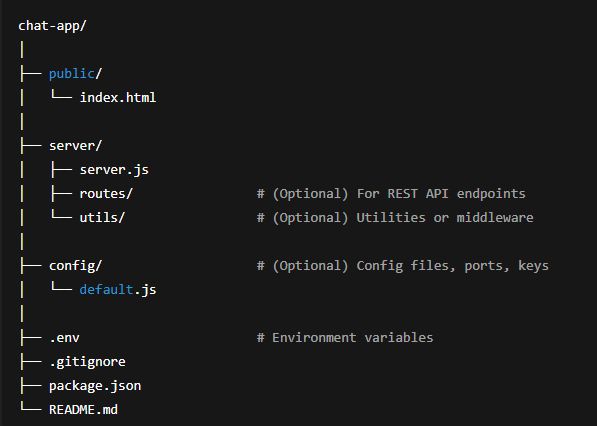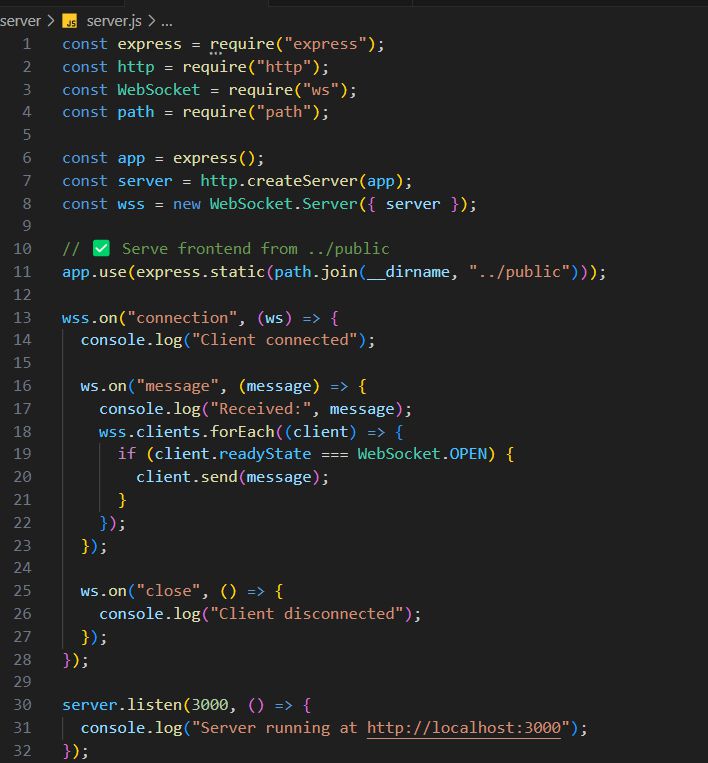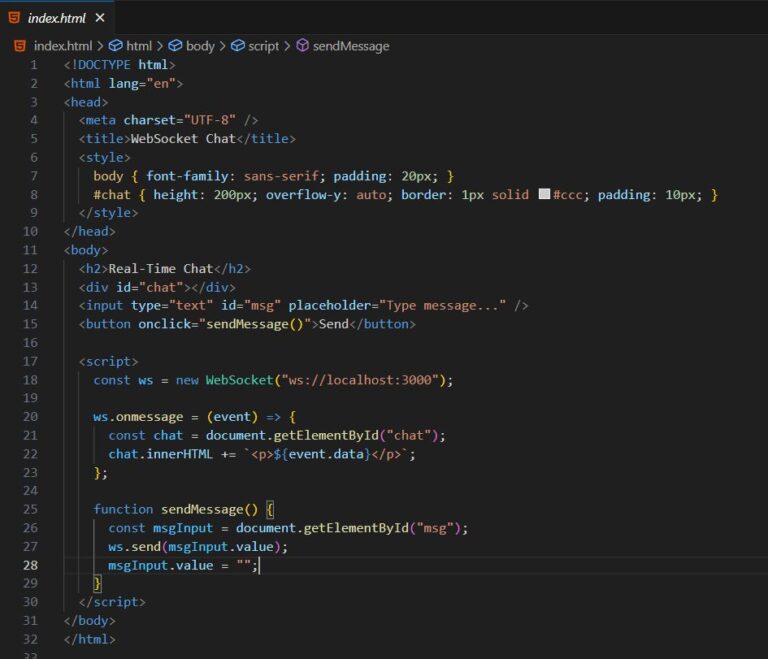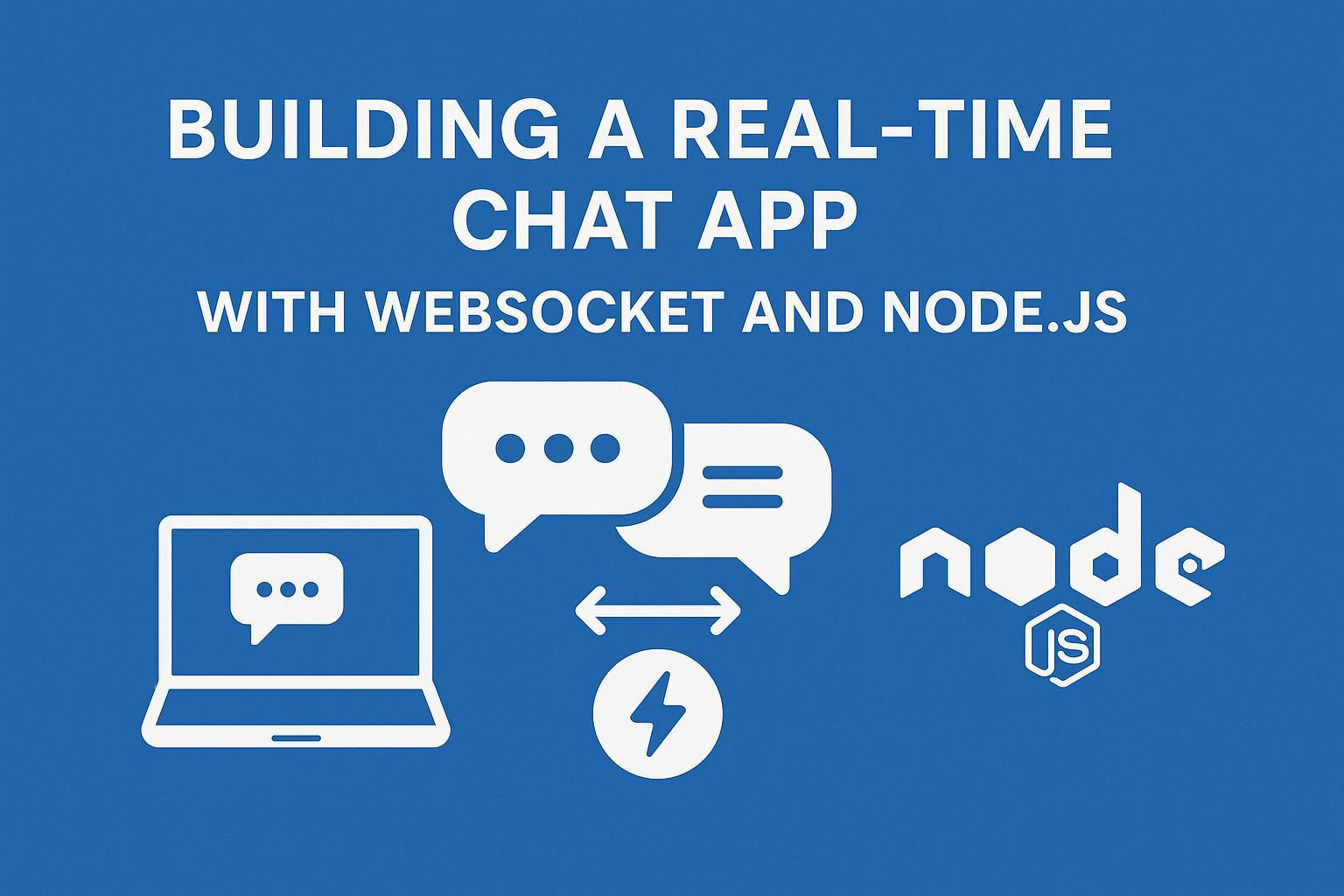Want to build a live chat app like WhatsApp or Messenger? In this blog, we’ll show you how to create a simple real-time chat app using Node.js and WebSocket, with easy code samples and explanations.
What are WebSockets?
WebSockets are a way to create a continuous connection between the client (browser) and server. Unlike HTTP, where the client must always initiate the request, WebSocket allows two-way communication — like a phone call, not just a one-time message.
With WebSocket, your app can send and receive data instantly, making it perfect for things like chat apps, live notifications, or online games.
HTTP Request-Response Model vs. WebSocket:

Real-World Advantages & Use Cases of WebSockets:
Advantages:
- Real-time communication
- Less overhead than HTTP polling
- Faster message delivery
- Maintains an open connection
Use-Cases:
- Messaging/chat apps (e.g., WhatsApp)
- Live sports scores
- Collaborative tools (e.g., Google Docs)
- Online gaming platforms
- Stock/crypto tickers
Why is Node.js Recommended for WebSockets?
Node.js is:
- Fast (non-blocking, event-driven)
- Lightweight
- Great at handling multiple connections simultaneously
- Has popular WebSocket libraries like ws or socket.io
Step-by-Step Tutorial: Building a Real-Time Chat App
Creating the Backend (Node.js + WebSocket)
Step 1: Environment Setup
Make sure Node.js is installed.
- node -v
- npm -v
Create a project folder:
- mkdir chat-app
- cd chat-app
Step 2: Installing Dependencies
Install Express and ws (WebSocket library):
- npm init -y
- npm install express ws
Step 3: Project Folder Structure

Step 4: Creating the Back-End Server
Create a file server.js:

Testing the Backend
Run: node server.js
You should see:
Server is running on http://localhost:3000
Step 5: Creating the UI of the Chat App
public/index.html:

Step 6: Implementing WebSocket on the Client Side
You already did this with:
const ws = new WebSocket(“ws://localhost:3000”);
Result:
- Open http://localhost:3000 in two browser tabs.
- Type messages in one tab and see them instantly in both tabs.
Conclusion:
You just built a working real-time chat app using Node.js and WebSockets! Now that you’ve mastered the basics, you can:
- Add usernames
- Add timestamps
- Store messages in a database
- Deploy it using services like Heroku, Vercel, or Render
